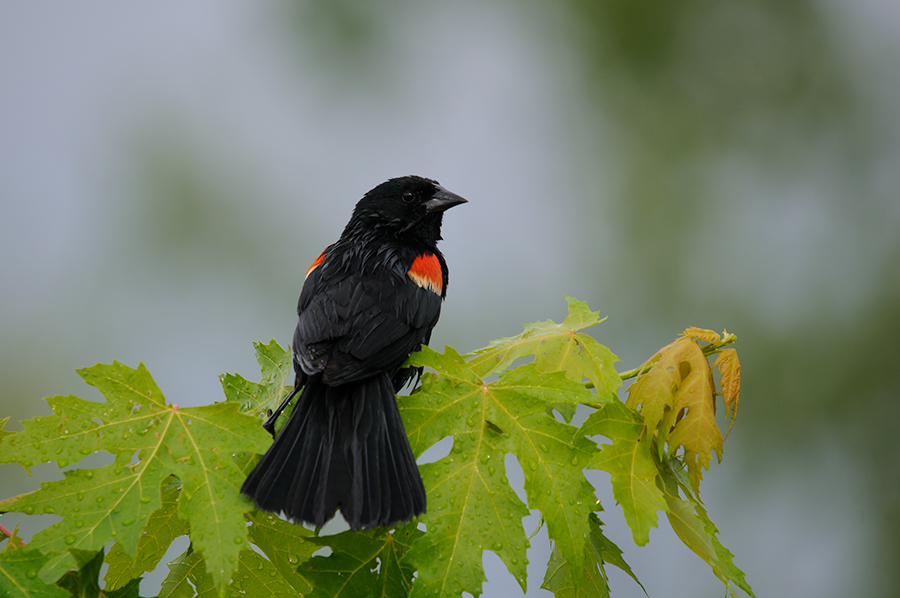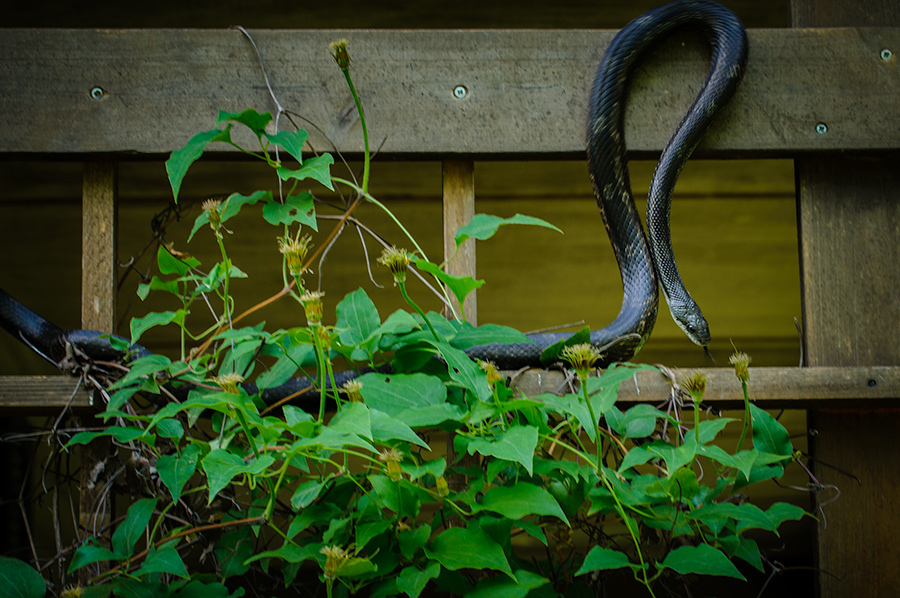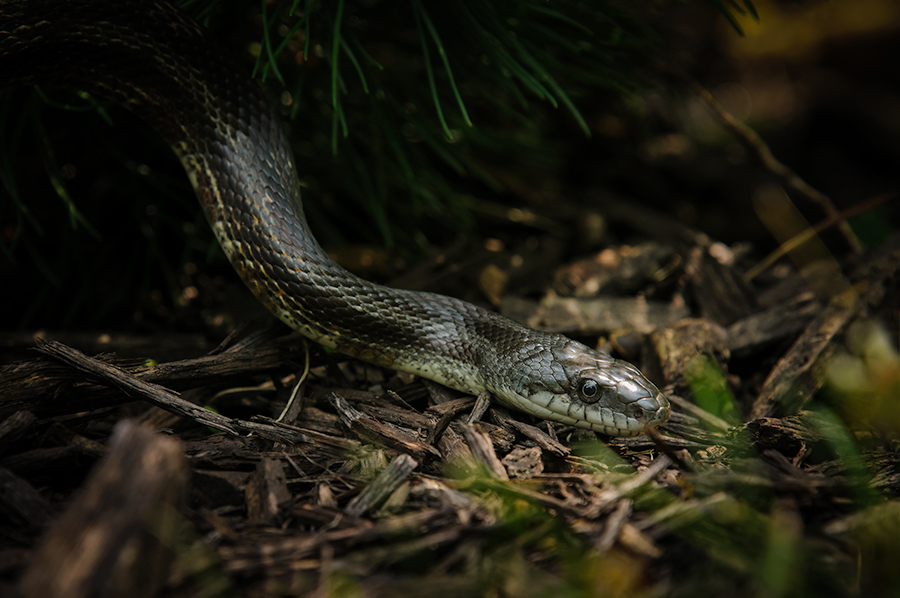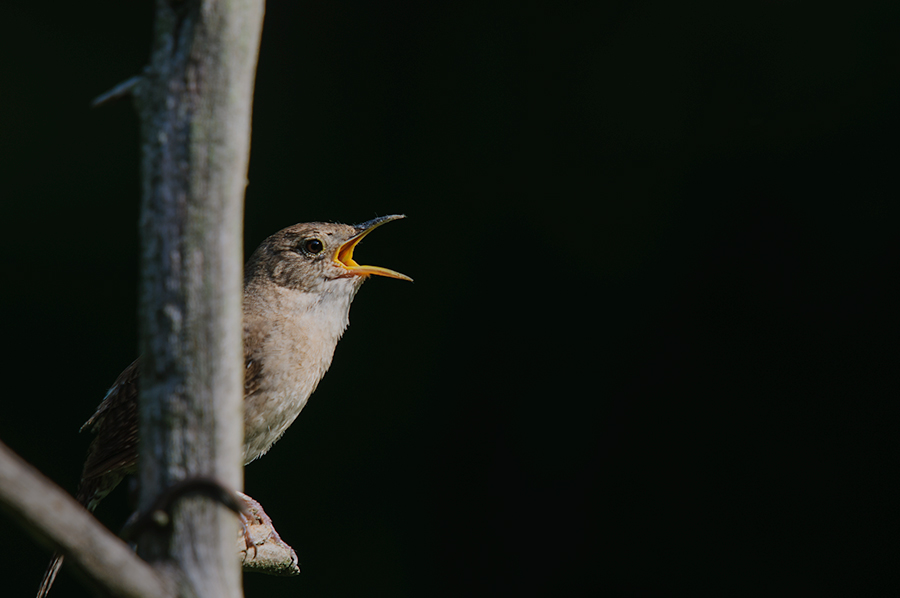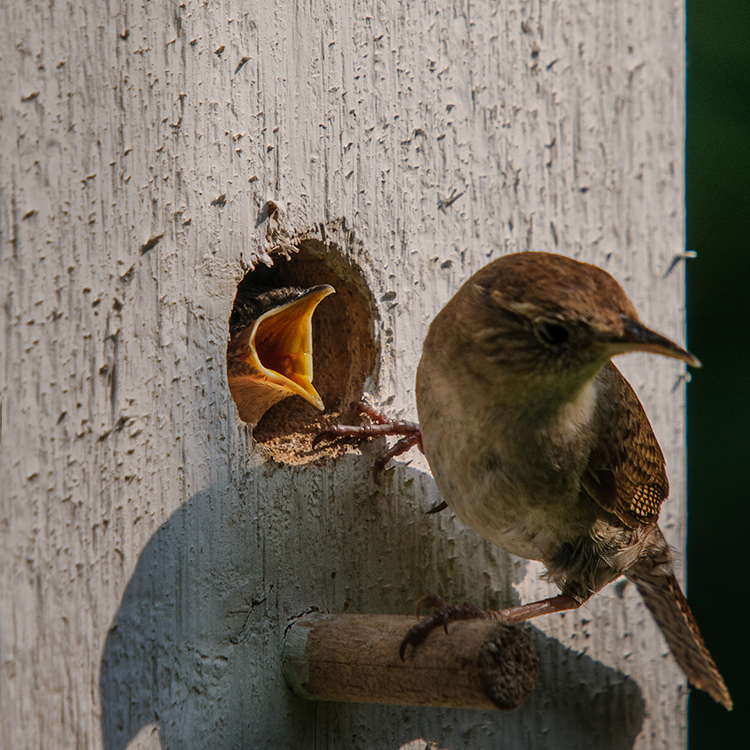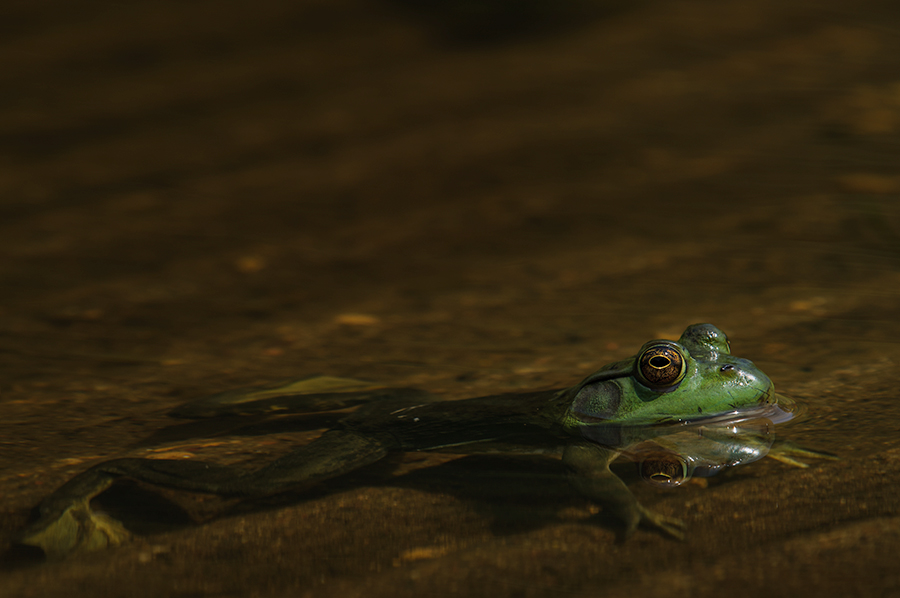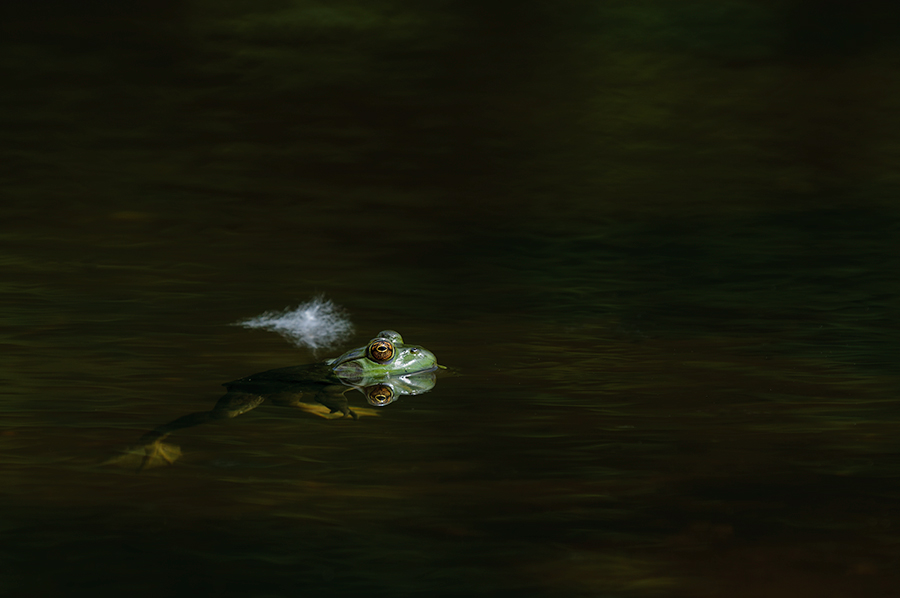
The first image leaves no doubt about that this American Redstart is very excited about something. It was hopping under the canopy of leaves from branch to branch and changed its position constantly while calling at the same time.

But it wasn't until I saw it with this insect in its bill that I realized that it was me who was somehow in its way and obviously prevented it from going to the nest. It wasn't eating the prey but tried to deliver the food to its offspring.The last thing I want to do while making pictures is disturbing the wildlife and that's why I moved away from the spot immediately.

While retrieving from the place I tried to see where the nest location could be but didn't see any. Suddenly I saw another bird on a branch just above where I just stood before. It was only slightly bigger than a hummingbird. And this was the answer to the question why the male American Redstart was acting almost in panic. It tried to feed the young bird right above me.
I have seen this warbler species a few weeks ago for the first time at a different location but haven't been able to make any good pictures. This time I followed the hint of a friend and went to the Mines of Spain, a popular recreation area south of Dubuque, IA. It will definitely make it into my Iowa Wildlife Gallery. You can click on the link in the sidebar if you haven't been there yet... ;-)
